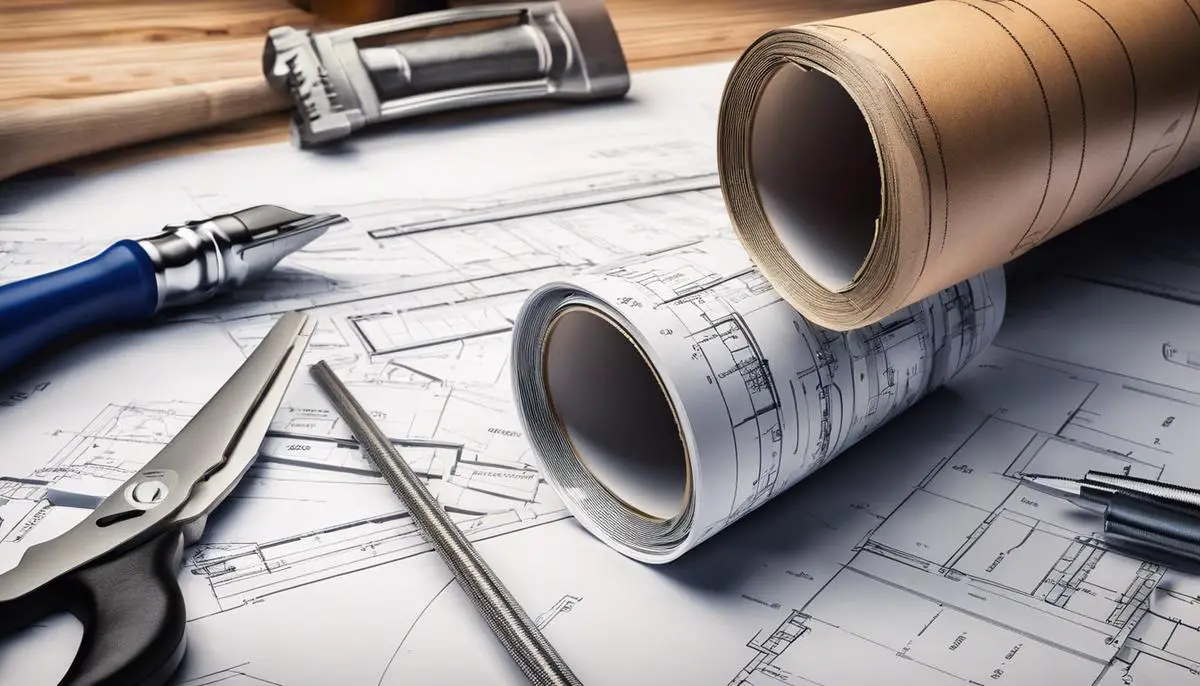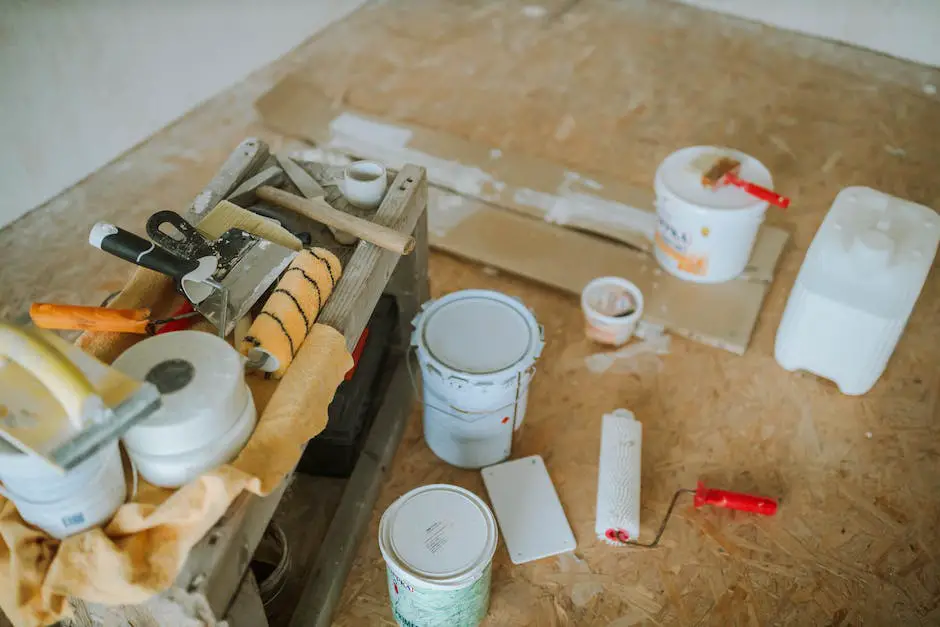Top Strategies to Economize Your Home Renovation Projects
Embarking on a home renovation project is an exciting journey that can enhance the comfort, aesthetic appeal, and value of your dwelling. However, it often appears daunting due to the extensive time, effort, and financial resources involved. This discourse provides a comprehensive guide to understanding, planning, and executing home renovation projects cost-effectively. We’ll delve into the cost breakdown relating to common renovations, focusing on labor, materials, permits, and inspections. We’ll also explore cost-saving measures through strategic planning and prioritizing, and how making the right decisions regarding DIY versus hiring professionals can impact the overall cost and quality of your project. Finally, we’ll discover how leveraging technology for strategic renovations can revolutionize your approach and yield meaningful savings without compromising the end result.
Understanding the Cost Breakdown of Renovations
Title: Deconstructing the Financial Framework of a Home Renovation Project
Consider this statistic: Home renovation is a $400 billion industry in the United States alone, underscoring the immense economic impact and potential of this domain. An astute understanding of the primary cost components involved in a typical home renovation project can significantly enhance the bottom-line outcomes for homeowners and investors alike.
Firstly, let’s take you to the cornerstone of every renovation project – labor costs. This crucial cost component often makes up about one-third of the total renovation expenses. Allocating funds to qualified professionals is critical to ensure the seamless execution and robust completion of the project. Skilled tradespeople like carpenters, roofers, masons, plumbers, and electricians are indispensable parts of the renovation process.
Following closely behind labor costs is the cost of materials. Sourcing high-quality materials for a renovation project can mean a substantial outlay, commonly accounting for approximately 35-40% of the total project cost. Factors like the quality, volume, and specific type of materials will heavily influence these costs.
The third key cost component is known as “soft costs.” These costs aren’t directly tied to the physical construction but play pivotal roles nonetheless. They encapsulate permit fees, inspection fees, and design charges. It’s paramount to factor these expenses into the budget as an oversight can result in substantial financial blowouts.
We must not forget the contingency reserve, the financial safety net for potential overruns, unforeseen repairs, or adjustments necessitated during the renovation process. The recommendation for investors is to set aside about 10-20% of the total project cost.
Now, let’s delve into the realm of mechanical components, which includes the electrical systems, HVAC, and plumbing. These elements do not always figure into every home renovation project, but when they do, they can escalate the overall costs significantly. Therefore, developing a comprehensive understanding of the state of these components before embarking on a renovation project is strongly advised.
Finally yet importantly, there might be cleanup and waste management costs post-renovation. Depending on the project’s scale, these can add a substantial amount to the final tab.
In conclusion, by understanding and mastering the breakdown of these cost components, homeowners and investors can create a robust and strategic plan that optimizes the use of resources, personnel, and budgets. A forward-thinking approach that factors in every cost component can assure you a renovation project that delivers value and quality in equal measure.

Smart Planning & Prioritizing as Cost-saving Measures
Title: Prudent Planning and Astute Prioritizing: Your Path to Cost-Effective Renovations
In the intricate world of property renovation and remodeling, financial management can be as foundational as concrete. The key is uncovering the secrets that turn renovation into a financially feasible project. To go beyond the realms of labor costs, material expenditures, soft fees, and other familiar expenses, tackle the less considered avenues such as prudent planning and smart prioritizing.
The Rolodex of Renovation Decisions
Careful planning involves a complete assessment of the property, considering its history, future prospects, limitations and potentials. This is not an area of concessions, but rather an opportunity for comprehensive comprehension. Getting to know your property’s quirks and qualities can save on unexpected costs later. A diligent plan, remarkably detailed, lays the blueprint for a smooth execution preventing costly on-the-fly changes or unforeseen issues.
Navigating the Renovation Labyrinth
Sophisticated navigation skills through the labyrinth of renovation choices are crucial. Merchant or e-commerce? Imported or local? Custom-built or manufactured? Dealing with such decisions demands a business savvy mindset. It’s about leveraging the power of comparison shopping, drawing on extensive industry knowledge and engaging trusted networks to secure the best price and quality deals.
Layering Costs Effectively
The art of layering costs is another part of this puzzle. Prioritize functional elements over aesthetic aspects. A perfect harmony of functional design and aesthetic beauty often leads to exorbitant expenses. Delineate your ‘must-haves’ from ‘nice-to-haves’ at the onset. Prioritize improvements that add real market value to the property, thus, ensuring your re-investment strategy is sound.
Navigating Vendor Relationships
Building positive vendor relationships is a less tangible aspect of renovation cost reduction. Polished negotiation skills form only a fraction of this. Setting clear requests for quote (RFQ) terms, fostering long-term relationships, and maintaining prompt payment schedules contribute to discounts, freebies, and preferential treatment—keys to unlock cost-saving opportunities.
Environmental Considerations
Careful planning can also help incorporate environmental conservation, leading to long-term savings. By selecting energy-efficient appliances, materials with low environmental impact, and incorporating sustainable practices, one can significantly reduce utility costs and enjoy possible tax benefits.
In conclusion, success in minimizing renovation costs lies not only in managing your traditional expenditure buckets but also in the subtle approach of prudent planning and smart prioritizing. It’s about blending industry knowledge and entrepreneurial spirit while leveraging professional networks and navigational acumen. This process, like a well-executed renovation, is a transformative journey, transforming a cost-intensive task into a financially astute project.

Choosing the Right Contractors at the Right Price
Choosing the Right Contractor: Mastering the Art and Science of Coping with Renovation Costs
Beyond the standard labor and material costs, engaging in a home renovation, any ambitious entrepreneur will probe deeply into the intricacies of the process. The perfect contractor for your venture is not simply a craftsman, but inherently an embodiment of business acumen, enhancing the efficiency and effectiveness of the bottom line.
Seemingly inconspicuous, yet monumentally critical to the overall venture, one cannot underestimate the role of the contractor in determining value engineering, which can indeed revolutionize the cost perspective of your home renovation. Value engineering is, simply put, the fine art of accomplishing a project’s functions at the lowest cost, yet mentaining quality, reliability, and performance. It’s a balancing act that, when done correctly, can possess the power to revolutionize the relationship between cost and output in renovation projects.
Addressing a less obvious aspect, the contractor influences the cost indirectly through their depth of knowledge regarding local codes and regulations, which are as diverse as American counties themselves. Hidden costs often reside in the shadows of local complexities that can only be unfurled by a seasoned contractor—an expert navigator of these labyrinthine demographics. Getting it right, the first time around, extinguishes any unexpected expenses arising from unnecessary redoes or unanticipated code compliance issues.
Additionally, the importance of seamless project management cannot be overstated. The ideal contractor delivers pinpoint precision in terms of timeline management, cutting down on project lag that could swell up costs. Having the right professional by your side ensures that every task runs on time and the project as a whole is coordinated and streamlined—an equation that adds up to reduced cost implications.
The contractor’s proficiency in adept risk management lends a hand at keeping the costs in check. Home renovation is a field fraught with potential pitfalls, so having an expert versed in identifying and circumventing these risks translates to substantial savings. Whether it’s detecting potential structural issues before they become major setbacks or the foresight to anticipate seasonal effects on construction processes, the value brought by an experienced contractor far outweighs their remuneration.
Last but definitely not least, the ideal contractor builds a bridge to the global marketplace, granting you the advantage of a wider choice of quality materials at competitive prices. Their established connections with suppliers and knack for shrewdly leveraging this network often translate to significant overall cost reductions.
In summation, the journey of home renovation becomes smooth and affordable when the captain steering the ship is a skilful contractor. Their presence shapes not only the physical manifestation of your home but also deeply influences the cost anatomy of the project – from unseen local codes to risk management, from project timelines to global purchasing prowess, making them not merely an asset but a necessity for your home renovation venture.

DIY Vs. Hiring Professionals: Making the Right Decision
Building upon these ideas, we delve into the crux of the DIY renovation equation – the physical skill set required, comparative quality of work and the time investment.
A DIY undertaking might be enticing, with the allure of reduced labor costs. However, this should be weighed against one’s skill set. A prerequisite to most DIY is basic knowledge in carpentry, tiling, painting and in some cases, somewhat advanced skills in electrical and plumbing works. The lack of these skills could potentially inflate your costs or extend your timeline due to errors and mishaps, not forgetting the potential risks associated.
Quality is a pivotal factor to consider. Skilled professionals are trained to deliver superior outcomes which could mean the difference between a polished look versus one that is merely functional. The lasting effect on the property’s visual appeal and it’s market value plays a crucial role in the overall cost-benefit evaluation.
Factoring in time costs into a DIY decision is paramount. Professionals come equipped with the capacity and proficiency to complete projects expeditiously. Amateurs venturing into DIY projects may discover the tasks more malignant than original forecasts, leading to perpetual project timelines and consequential cost overruns.
Heading on to the risk of warranty, DIY projects often mean forfeiting warranties on appliances and systems which might be annulled due to amateur installation. Prospective buyers could also demand warranties on the work done, which could be a handicap if the property is to be sold.
Lastly, the aspects of financial financing options need to be factored in. Professional contractors often offer customer-friendly financing choices, which could make the cost of renovation more manageable and less appending on personal finances.
In conclusion, the decision to DIY or hire a professional isn’t as black-or-white as it may seem. It’s a careful balance of your skills, time-affect, the scope of the project, warranty provisions, financing options, and the potential long-term value each decision brings to your property.

Leveraging Technology to Save on Home Renovations
Exploring the Technological Angle in Renovation Economy
Step into the digital era where technology carves new paths for remodeling and renovation solutions. The adoption of technology in construction and renovation industries uncovers potential economic advantages. Here, we focus on several technological innovations that assist in economizing renovation projects.
Efficiency through Automation
Automation, a central element of the technological revolution, enables more precise, faster, and cost-effective procedures in renovation projects. Robotic and automated systems minimize human errors and accelerate project timelines. Employing automation in repetitive tasks such as plastering, drilling, brick-laying, and painting significantly reduces labor costs, while simultaneously enhancing project accuracy.
In design and drafting phases, the use of Computer-aided design (CAD) and Building Information Modeling (BIM) software offer cost-effective planning solutions. These tools allow accurate project visualization, efficient resource allocation, and thorough risk assessment which ultimately lead to significant cost savings.
Revolutionizing Procurement with E-Commerce
Digital marketplaces and e-commerce platforms streamline procurement methods. With online marketplaces, contractors gain access to a broader range of suppliers, stimulating a competitive market and driving down material costs. E-commerce platforms also enable efficient order tracking, maintaining timelines and budgets.
3D Printing – The Future of Construction
Although still in its early stages, 3D printing is set to revolutionize the construction and renovation sector. It has the potential to print bespoke construction elements at a fraction of the traditional costs, enhancing customization capabilities and reducing waste.
Intelligent Project Management
Project management software (PMS) offers automated scheduling, communication, resource allocation, and risk management, ensuring a seamless progression. Moreover, PMS reduces administrative costs, boosts productivity, and minimizes project overruns.
Energy-Saving Technology
Investing in energy-efficient appliances and technologies may increase initial renovation costs, but they pay off in the long term by reducing utility bills. Smart home systems facilitate monitoring and controlling energy usage, thereby improving the energy efficiency of the renovated property.
Conclusion
In conclusion, technology holds the power to reinvent renovation economies. From CAD and BIM to e-commerce, automation, 3D printing, and energy-efficient solutions, technology significantly reduces project costs while improving time efficiency and precision. A strategic investment in these technologies can be the first step toward a cost-effective, forward-thinking renovation journey.

Photo by ejagumbay on Unsplash
The guidance within this discourse aims to enlighten homeowners about the indispensable role of strategic planning, understanding cost structures, and the sensible use of technology in home renovation projects. Whether choosing to wield a hammer yourself or hire a professional, the goal is to enhance your living space while keeping costs at bay. Informed choices about contractors and projects, coupled with tech-savvy insights, can help make home renovations a rewarding experience. It’s all about finding that delicate balance between cost and quality, ensuring a well-executed renovation project that brings the vision of your dream home to life without breaking the bank. After all, a well-planned home renovation not only boosts your home’s value but enriches the quality of your day-to-day life.
